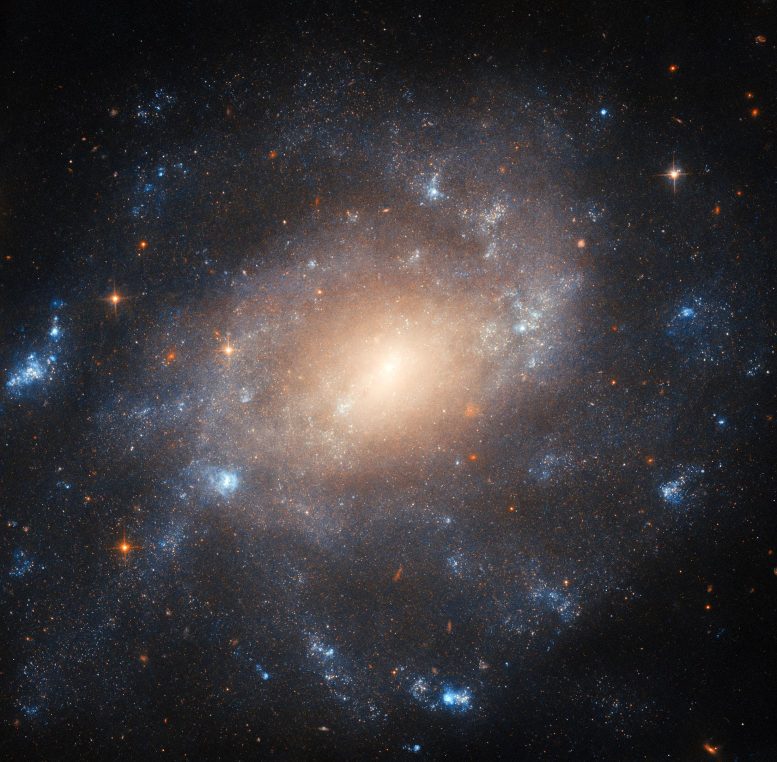
This photo from the Hubble Space Telescope shows the spiral galaxy ESO 422-41 in the Columba constellation, displaying its detailed spiral arms and bright center. This image continues a long history of studying the stars, going back to the large photo projects of the 1970s. Credit: ESA/Hubble & NASA, C. Kilpatrick
Hubble's detailed picture of the spiral galaxy ESO 422-41 shows its star-filled structure and its importance in astronomy.
This Hubble Picture of the Week shows the spiral galaxy ESO 422-41, which is about 34 million light-years away from Earth in the Columba constellation. The patchy, star-filled structure of the galaxy’s spiral arms and the glow from its dense core are revealed in great detail by Hubble’s Advanced Camera for Surveys. Images of this galaxy have a history spanning decades.
The historical context of studying the stars
The name ESO 422-41 comes from its identification in the European Southern Observatory (B) Atlas of the Southern Sky. In the times before automated sky surveys with space observatories, new objects were found by large photo projects. ESA’s Gaia, many stars, galaxies, and nebulae
Astronomers used advanced large telescopes to take many photos of a sky area. They later examined the photos and tried to identify the new celestial objects.
Advances in studying the stars
In the 1970s, a new telescope at ESO’s La Silla facility in Chile conducted a survey of the southern sky, which had not been studied as much as the northern sky. At the time, the main technology for taking images was glass plates treated with chemicals. The resulting collection of photo plates became the ESO (B) Atlas of the Southern Sky.
Astronomers at ESO and in Uppsala, Sweden worked together to study the plates, documenting hundreds of galaxies like ESO 422-41 and nebulae that were previously unknown to astronomy. star clusters
Progress in Sky Surveys
Astronomical sky surveys have evolved from digital, computer-assisted surveys such as the Sloan Digital Sky Survey and the Legacy Surveys, to those done by space telescopes like Gaia and the Wide-Field Infrared Survey Explorer.
Despite that, photo sky surveys contributed greatly to astronomy for many years, and the archives of glass plates are important for studying large parts of the sky. Some are still used today, for example, to study variable stars over time. And the objects found in these surveys, including ESO 422-41, can now be explored thoroughly by telescopes like Hubble.



